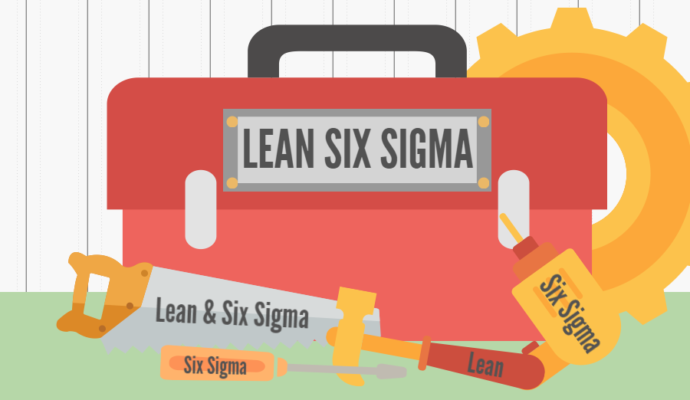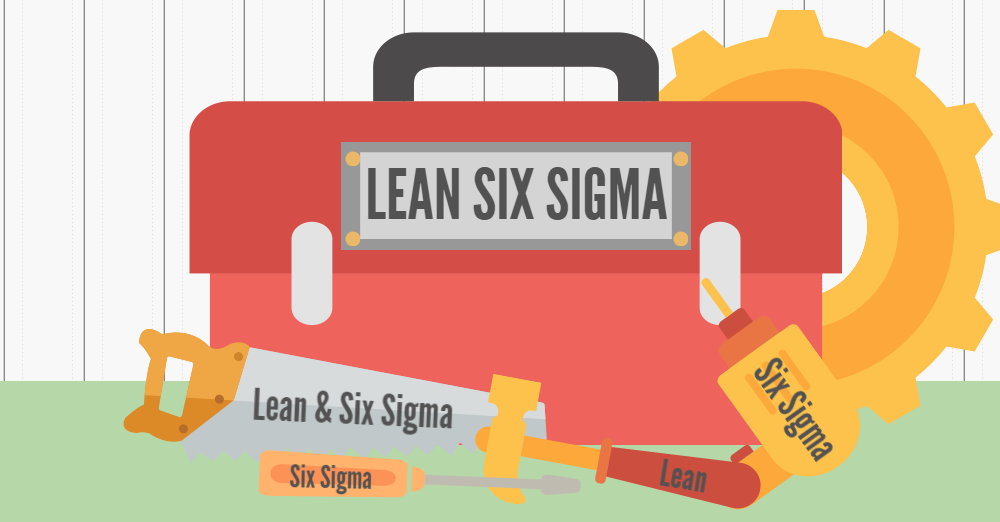What is Lean Six Sigma in Illinois?
Contact Us

Why Should You Choose Six Sigma?
Six Sigma has been around for years, a little after Motorola was launched. Following that, the creation of this quality control system has been fascinating. Its growth was sluggish at first, but it gained attention as a result of its positive results. As General Electric’s Jack Welch and Allied Signal’s Larry Bossidy added Six Sigma in the mid-1990s, the methodology’s early development potential was recognized. Since then, a broad number of companies all around the world have adopted and reaped the advantages of this approach.
Six Sigma was often referred to as a quality improvement technique before being accepted as a quality control strategy! Six Sigma, on the other hand, has rescued Fortune 500 companies and culminated in estimated earnings of millions of dollars. As a result, it has shown that this management tool is not a fleeting fad.

The Advantages of Using Six Sigma
When used with accuracy and concentration, the Six Sigma method has many functional advantages such as increased business retention and customer satisfaction: Any successful company wants to keep its current customers. If you maintain consumer loyalty, clients would be more likely to stick with your brand rather than switching to a different supplier or product line. Are you aware of customers that are dissatisfied with the service offerings? Many corporations are probably unaware of this reality, and they plan market growth plans without understanding how happy their consumers are.
When you use the Six Sigma strategy, you reduce the likelihood of unhappy customers. To effectively improve consumer engagement, conduct a customer dipstick to understand the fundamental qualities of your service or product that are needed for customer loyalty. Make sure you don’t overlook any aspects that will attract consumers and inspire you to expand your customer base while designing market expansion strategies.
A combination of market capability, performance, cutting-edge technology, and rigorous quality control is required in today’s industry. Do you like the organization to be comparable to the strongest of the industry? Is gaining a comparative advantage over your competitors one of your primary market goals? The methodologies of Lean Six Sigma Experts of Illinois are being utilized to increase the effectiveness of available services.
Frequently Asked Questions
The world of today is on the brink of change. The only exception, if any, is that the rate of transition accelerates with each passing year. The role of management in an organization is to construct systems. There is still the possibility of designing and delivering value to consumers and business-owner services. It is a continuous method. Competitors must adapt to retain consumers. As a consequence of technical advances, manufactured goods and services are delivered in several forms. Customer expectations are increasingly shifting. What works for you today could become obsolete tomorrow. The "transform imperative" is one aspect that all organizations recognize. Organizations that want to fight for reform must adapt or diminish. The step has the support of Lean Six Sigma. It promotes the development of both consistency and punctuality as a theory. Management must formulate innovative strategies for selling goods and services. Operational change becomes a way of life rather than merely a collection of programs. Lean Six Sigma is both a methodology and a collection of techniques. Managers should use this as a starting point to encourage change in their respective industries. Master Black Belts and Black Belts support the activities and development branches. This reveals that Six Sigma is on the right trajectory and consistent with corporate priorities. Since choosing the correct Lean Six Sigma partner, as selecting every other partner, manufacturer, or provider, is vital to program progress, it only makes sense to leverage our expertise to build a collection of frequently asked questions to include while assessing prospective partners. Here are some of the most inquired questions, along with some advice on the types of responses to expect: At the very least, Lean Six Sigma Experts of Illinois has a Six Sigma delivery and teaching model in operation, as well as an accomplished Master Black Belt who can advise and coach on ventures. The Master Black Belt should have real-world expertise and be conscious of the company's economy and people's distinctions. When organizing, candidates can create tools that can be applied to real-world systems. Integrating project outcome indicators into course management through assignments is often needed for learners to translate their training experiences into project outcomes. The Master Black Belt will also create coaching records that both explain and resolve participant and institutional project issues. Understanding if an organization can implement a Lean Six Sigma initiative is critical to making the transition. Your deployment partner will lay the groundwork for a long-term transition by defining the metrics for a preparation analysis. This involves evaluating existing proposals in the pipeline, as well as assessing potential policy proposals and possible plans. A readiness evaluation will involve a summary of areas of opportunity for progress found in a gap study, as well as an analysis of consumer and market survey results. Both of these elements can aid in recognizing potential development risks, which can then be resolved. It is a collection of strategies for deciding what consumers want and aligning the organization and services, such as calculation systems, to fulfill those expectations. Six Sigma decreases the number of surprises (variation) and increases objectivity in evaluating results, especially in terms of customer execution. To be a Six Sigma specialist, you must have a deep willingness to deliver outstanding customer care, the courage to constantly question the status quo, and basic knowledge of statistics.
Why Six Sigma?
How Does Lean Six Sigma Work?
How do you handle managing classes through their projects?
How can you incorporate your program with the work that our company is already doing?
Six Sigma is about statistics, do I need to learn statistics?
What is the difference between Six Sigma and Lean?
The Lean method applies to the gradual elimination of waste (called Muda in Japanese). There are seven forms of waste in sports, according to Taiichi Ohno (TPS fame). To provide support to consumers, it is critical to identify and reduce waste. To improve a company’s efficiency and operations, both the Lean and Six Sigma methodologies are included. Lean focuses on systems, maximizing movement, and increasing efficiency. Six Sigma is concerned with rising efficiency, decreasing waste, and growing effectiveness.
There are so many areas or regions where we offer these services with most of them being cities.
However, if you need any of these services, you need to contact us. The list below comprises the areas where we offer these services.

